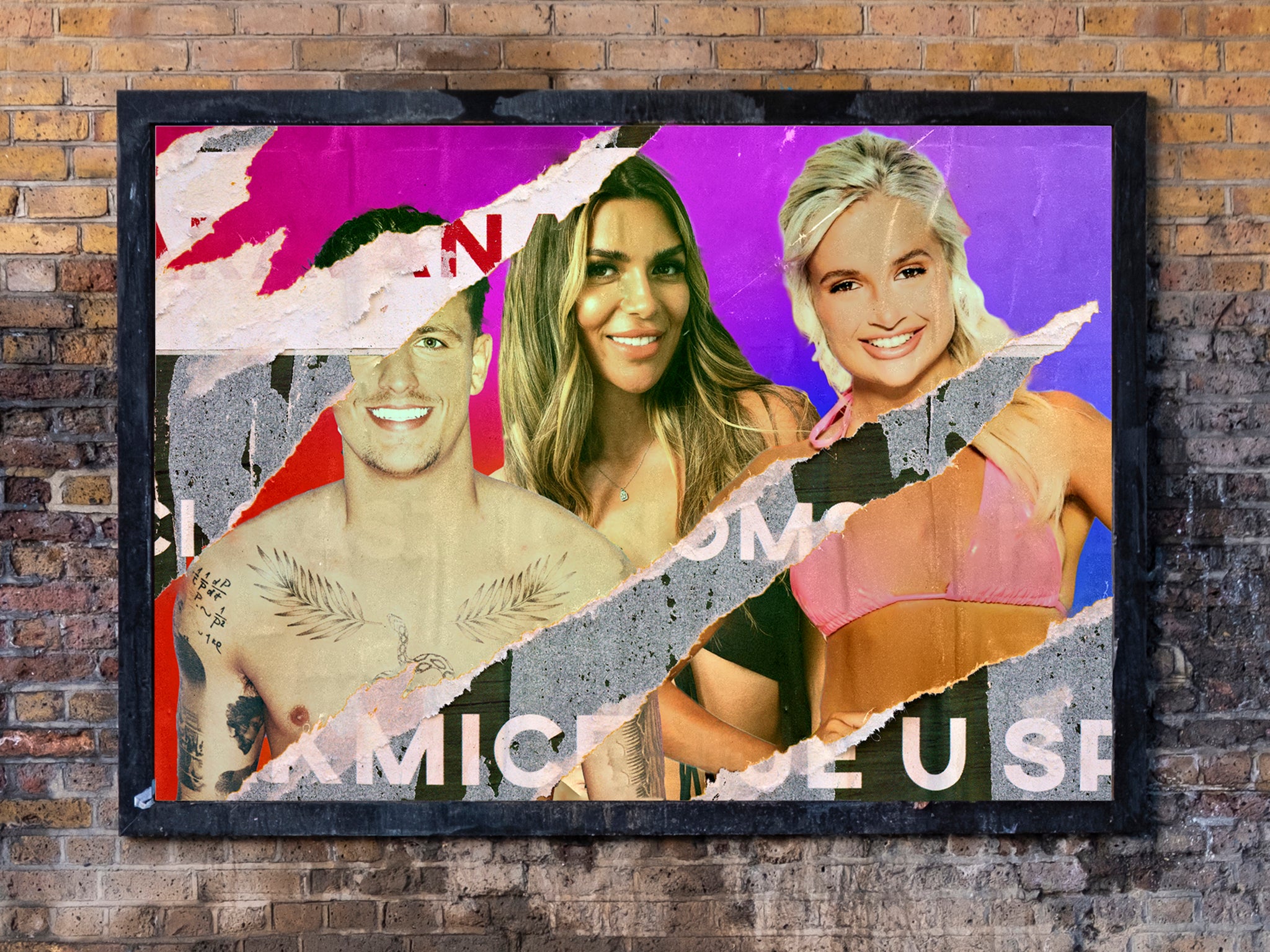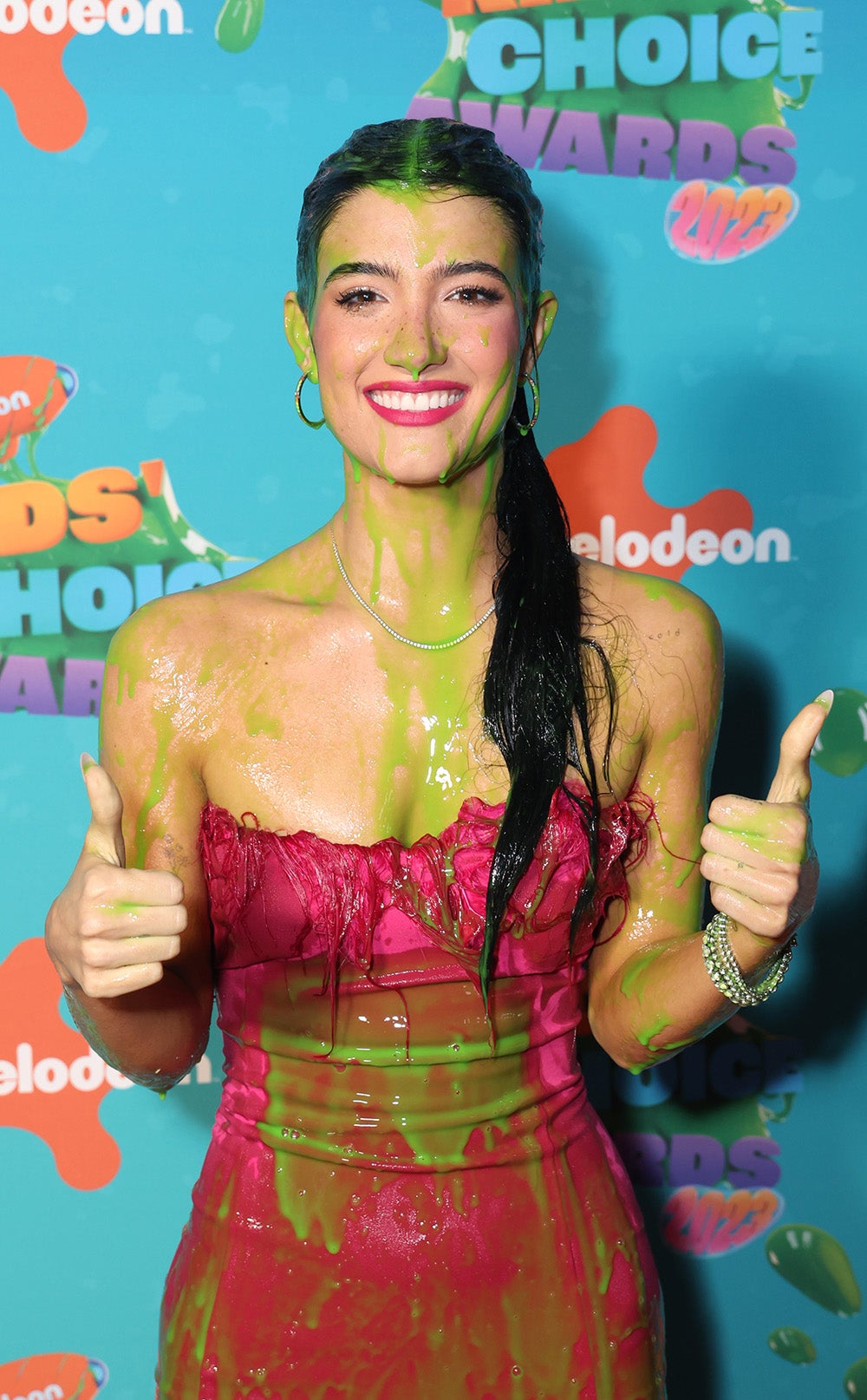Ekin-Who?: The reality TV to influencer pipeline is dead… what now?
As ‘Love Island’ alumni lose out on lucrative sponsorships and the show’s most recent season creates zero personalities, Eloise Hendy asks whether the age of the reality TV superstar is over, and what it means for the future of celebrity capitalism


Your support helps us to tell the story
From reproductive rights to climate change to Big Tech, The Independent is on the ground when the story is developing. Whether it's investigating the financials of Elon Musk's pro-Trump PAC or producing our latest documentary, 'The A Word', which shines a light on the American women fighting for reproductive rights, we know how important it is to parse out the facts from the messaging.
At such a critical moment in US history, we need reporters on the ground. Your donation allows us to keep sending journalists to speak to both sides of the story.
The Independent is trusted by Americans across the entire political spectrum. And unlike many other quality news outlets, we choose not to lock Americans out of our reporting and analysis with paywalls. We believe quality journalism should be available to everyone, paid for by those who can afford it.
Your support makes all the difference.There used to be a reality star formula. It was honed over two long decades of 21st-century TV – from the time when just shoving people into a CCTV-laden house in Stratford was enough to stir up scandal, followed by the era of “constructed reality” à la TOWIE, and then the grand cultural ascension of Love Island. Essentially, it went something like this: get on a show, get followers, get a six-figure brand deal with Pretty Little Thing, BoohooMan or the fast fashion company most in need of an ethical rinse, and – if popular – pivot that into a fashion line, a book deal and a BBC Three documentary series. Or, if you’re less popular, hitch a ride onto the talk show circuit, then the club-night circuit, then, eventually, the second-tier reality show circuit. And across all success-stratas, there’s the goal of perpetual paid content. Instagram ads for teeth whitening kits and fake tan. Protein shakes. Gifted items and discount codes. Every moment recorded, edited and monetised, so the “reality show” never really ends.
Recently, though, there’s been a shift. The apparently seamless journey from reality star to influencer – which sees people go from publicly performing their personality on nightly TV to doing it for the lucrative attention of phone screens – has had a major wobble. For at least six months now, marketing websites, trend forecasters and media publications have all been proclaiming the same thing: the era of the influencer is coming to an end.
If you’ve missed all the headlines declaring “Influencer Culture is Dying”, “Influencer Marketing is Dead”, and “The Reality-TV-to-Social-Influencer Pipeline Has Dried Up”, perhaps the best way to look at the situation is through the lens of Love Island alumni Molly-Mae Hague. After coming second in 2019’s fifth season of the reality TV juggernaut, Hague and her nepo baby boxer boyfriend Tommy Fury rapidly cemented themselves as influencer royalty. With a follower count of almost three million upon leaving the villa, Hague reportedly signed a £500,000 deal with Pretty Little Thing, before becoming their brand ambassador, and then their “creative director”. She launched a self-tanning range, secured a deal with Starbucks, and then a book deal for her own memoir. As of this year, and at the age of just 23, Hague has 7.5 million Instagram followers and is the richest Love Island contestant ever. Her net worth is estimated at £6m. In other words, if there was a reality TV to social influencer pipeline, Molly-Mae was basically the equivalent of Shell PLC.
But, just as pipelines can be blown up, influencers’ bubbles can burst under public pressure. In January last year, Hague inadvertently found herself becoming not so much the biggest success story of the influencer era, but its biggest villain. Speaking on the Diary of a CEO podcast, Hague – who earns a seven-figure salary for her role at Pretty Little Thing – remarked that we “all have the same 24 hours in a day”, and suggested that if you want something badly enough, you can achieve it no matter what. The backlash was swift, with her comments widely branded “gross” and “tone deaf”, especially given that a 2020 investigation into the Boohoo Group (of which PLT is a part) alleged that Leicester garment workers for the company were being paid £3.50 an hour. On Wikipedia, Hague’s name was changed to “Molly-Mae Thatcher”. Within days, she’d gone from golden girlboss of influence to the poster girl for inequality. Then the influencer backlash exploded.
Suddenly, influencers from across social media were being called out for a whole range of offences, be it Lydia Millen moaning about having to check into The Savoy “to keep warm”, or Jayne Rivera posting a photoshoot from a funeral in front of the open casket. Then this winter, ITV announced a new Love Island social media rule. For the first time, islanders would be told to make their accounts “dormant” while appearing on the show. Ostensibly a way to shield contestants and their families from trolling and abuse, the decision also meant that Winter Love Island’s contestants left the villa without the uptick in online popularity previous contestants had come to expect. As a result, ITV are apparently facing a slump in applicants for the summer series, as recent and distant cohorts alike struggle to remain relevant and stay on top of the reality TV rich list, in a culture that seems increasingly anti-influencer. Just last week it was announced that last summer’s Love Island winner Ekin-Su Cülcüloğlu – who stormed the public vote, left the villa with over one million Instagram followers, and was originally tipped to become a bigger, richer star than Molly-Mae – had been dumped by fashion brand Oh Polly less than six months after signing the “biggest clothing deal in Love Island history”. So, is this all proof that the reality TV to social influencer pipeline has indeed finally dried up? Or is the influencer era just undergoing a transformation?
While the backlash has been churning, much has been made of the idea that Gen-Z are rejecting the millennial “aspirational” aesthetic ubiquitous on Instagram. Rather they want “authentic” content. Undoubtedly some of this has been overegged by trend forecasting companies eager to usher in a new and radically distinct generation, but it does seem inarguable that TikTok and, to a lesser extent, BeReal have changed the social media game, and, consequently, who can excel at playing it. TikTok’s algorithm shifted the power balance away from established figures and brands and towards individual bits of entertaining and engaging content, created by anyone. Suddenly, feeds were dominated by trainspotting enthusiasts and Yorkshire girls chatting about jacket potatoes with tuna mayo.
As all the hype around “authenticity” suggests, central to this vibe shift is a general distrust around “fakeness” – the charge that is, in the constructed reality of Love Island, the most damning of insults. There’s the problem of “fake” influencers who’ve bought followers and engagement. Then there are seemingly more mundane issues of “fakeness” that, in the current climate, have the power to dominate discourse for weeks on end. This was the case in the last couple of months. A micro TikTok scandal about a beauty influencer accused of wearing fake lashes to promote a mascara brand suddenly became something far bigger. What followed was a deluge of “de-influencing” posts, where TikTokkers began telling people what not to buy. With videos titled and captioned “Disappointing Products” or “Worst Purchases”, the “de-influencing” trend is essentially made up of negative product reviews, often puncturing the hype around products promoted by other influencers. In a sea of positive endorsements that had increasingly come to be seen as fake or paid-for, negativity is read as honesty, and has emerged as a way to win trust.

The big question, though, is whether this is all new. Is this paving the way to a more authentic, anti-consumerist, democratic and sustainable society, both on and offline? Some have certainly argued that the combination of influencer fatigue and new, apparently more democratic platforms and algorithms means more opportunities for small, traditionally marginalised creators. TikTok has, after all, allowed micro-influencers to emerge as successful content creators, many of whom do not fit the thin, white, wealthy woman influencer stereotype. The last year has also seen a much-hyped rise in smaller online communities and niche content – such as anonymous meme accounts that speak to and satirise micro-cultures. It seems inarguable, too, that instead of working with influencers to create paid content for their feeds, brands will continue to pivot to working with creators – both more informally in line with specific trends, and by adapting their generated content in the wider marketplace. Take Dunkin Donuts partnering with American TikTok sensation Charli D’Amelio on a drink named after her. But, as this example implies, rather than the death of the influencer, this shift should be seen as the birth of Influencer 2.0.
Going forward, we’re all going to be seeing more brands dropping their reality star influencers to work with micro creators who’ve been judged as more “authentic” online. But the goal here is not just staying relevant, it’s cutting costs. Getting creators to generate popular, high-quality content that would usually require significant resources to produce is essentially getting marketing on the cheap. At the same time, “de-influencing” is not a death knell for influencing at all – it’s just reputation management. The trend is an opportunity for influencers to reassert their original role as trusted “guru” figures, rather than paid-up puppets of big business. While some small-scale creators might simply be jumping on a trend in order to share their honest opinions about Kylie Jenner’s lip kits or – surprise, surprise – the lousiness of clothing by Shein, for many it is a deliberate strategy to protect their popularity, and shore up future income.
Already we can see the previous generation of influencers attempting to play catch up. Only a fortnight ago, Kim Kardashian posed in a London pub clutching a baby Guinness. Days later, her sister Khloe posted a photo in which she’s seen hugging a friend in front of a black, white and silver hydrangea print accent wall, which essentially looked like she was at a uni pre-drinks before a big night out at Pryzm. Across the internet, people have proclaimed the Kardashians are leaning into “British hun culture” – but really, this is plain old status anxiety. The queens of reality TV and millennial influence can see their grip is slipping, so what do they do? They attempt to seem “relatable”, “genuine”, and “authentic” by going to the football, popping up in cheeky boozers, and posting “get ready with me” videos.
Welcome to Influencer 2.0, ruled by performative authenticity. But never fear, the tides will turn once again. As with politicians, the more that marketers and content creators spout the terms “trust”, “transparency”, “authenticity” and “community”, the more hollow they sound.



Join our commenting forum
Join thought-provoking conversations, follow other Independent readers and see their replies
Comments